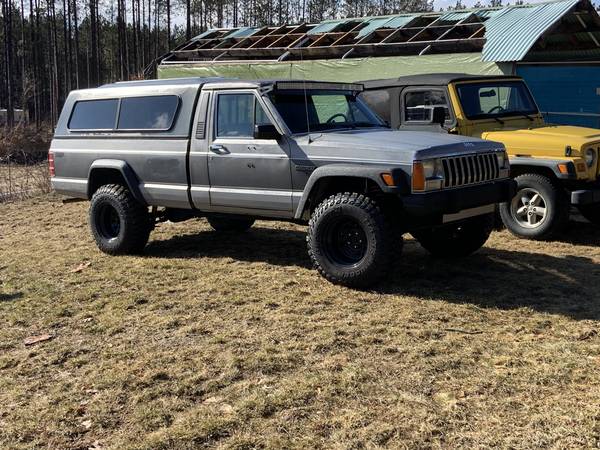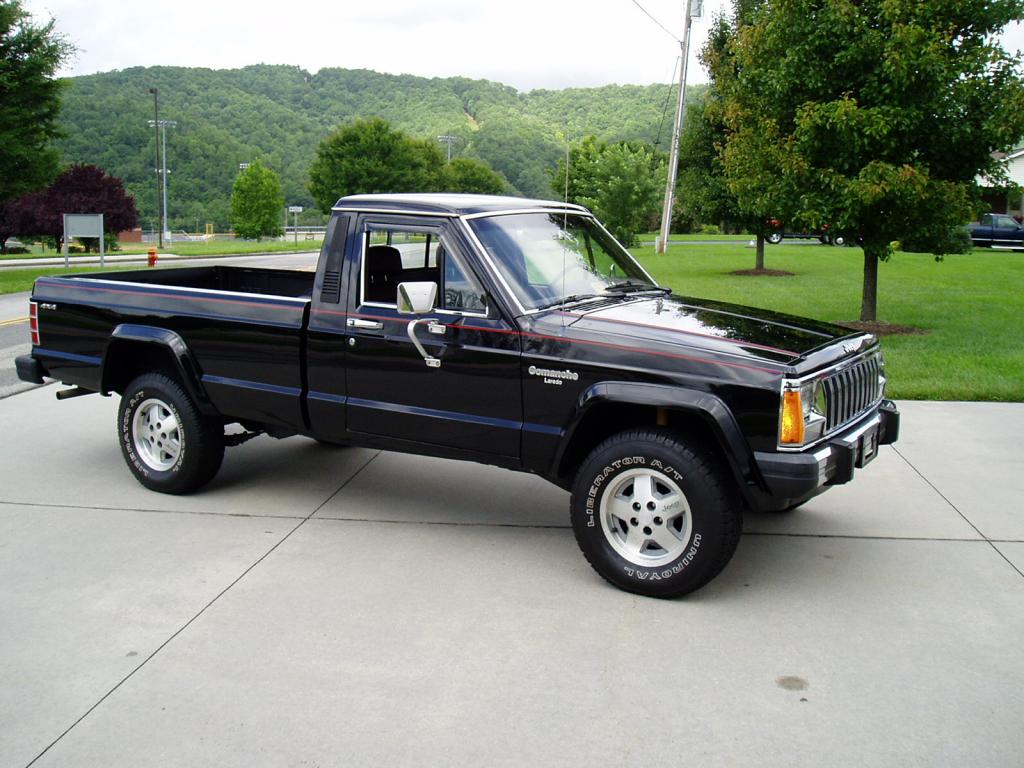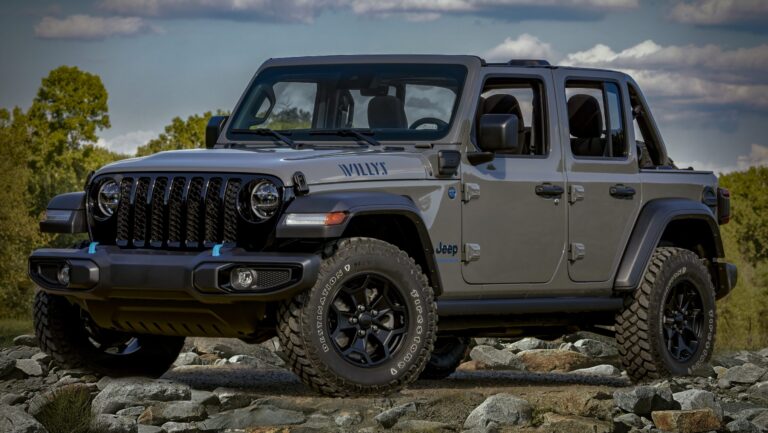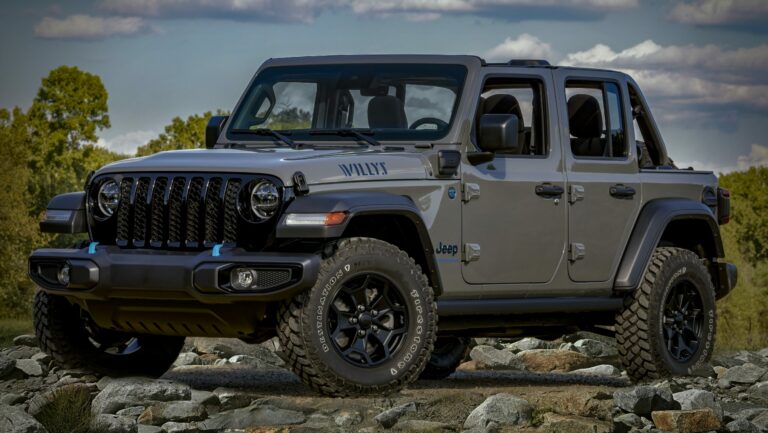Jeep Comanche Trucks For Sale: Unearthing a Cult Classic Pickup
Jeep Comanche Trucks For Sale: Unearthing a Cult Classic Pickup jeeps.truckstrend.com
In the annals of automotive history, few vehicles blend rugged utility with a passionate cult following quite like the Jeep Comanche. Produced for a relatively short run from 1986 to 1992, the Comanche (factory code MJ) was Jeep’s innovative foray into the compact pickup truck market, built upon the highly successful XJ Cherokee platform. More than just a truck, the Comanche represented a unique fusion: the go-anywhere capability and familiar styling of a Cherokee with the practical open-bed utility of a pickup. Today, these distinctive trucks are no longer mere used vehicles; they are sought-after classics, projects, and highly capable off-road machines, making the phrase "Jeep Comanche Trucks For Sale" a beacon for enthusiasts, collectors, and those seeking a truly unique and capable vehicle.
The importance of the Comanche in the modern market stems from its enduring appeal. It offers a rare combination of robust, unibody construction (up to the cab, with a separate frame for the bed), legendary Jeep off-road prowess, and the increasingly rare charm of a compact pickup. Its relative scarcity, coupled with the interchangeability of many parts with the ubiquitous XJ Cherokee, has kept these trucks alive and thriving in the hands of dedicated owners. Whether you’re looking for a weekend trail rig, a dependable workhorse, or a unique piece of automotive history, understanding what to look for when encountering Jeep Comanche Trucks For Sale is paramount.
Jeep Comanche Trucks For Sale: Unearthing a Cult Classic Pickup
The Enduring Appeal of the Jeep Comanche
The Comanche’s allure is multifaceted, stemming from its design, engineering, and the legacy it inherited from its Cherokee sibling. At its heart, the MJ is fundamentally an XJ from the front bumper to the B-pillar, sharing the same iconic front fascia, interior, and powertrain options. However, behind the cab, it features a traditional pickup truck bed, available in 6-foot (short bed) and 7-foot (long bed) configurations. This hybrid design offered the best of both worlds: the comfortable, car-like ride and handling of the Cherokee, combined with the versatility of a pickup.
Key to its enduring appeal are its robust mechanicals. The most desirable engine option, by far, is the venerable 4.0-liter AMC Straight-6 engine, known for its bulletproof reliability, ample torque, and ease of maintenance. This engine, paired with either manual or automatic transmissions and Jeep’s legendary Command-Trac (NP231) or Selec-Trac (NP242) transfer cases, made the Comanche a formidable off-road contender. Its solid front (Dana 30) and rear axles (Dana 35 or, more desirably, the stout Dana 44) provide excellent articulation and durability for challenging terrains. For many, the Comanche represents the pinnacle of compact truck design from an era when simplicity and ruggedness were paramount.
Key Considerations When Buying a Jeep Comanche
While the Comanche’s reputation for toughness is well-deserved, these trucks are now decades old, and time takes its toll. When browsing Jeep Comanche Trucks For Sale, a thorough inspection is crucial. Here’s what to prioritize:
- Rust: This is arguably the biggest enemy of any older vehicle, and the Comanche is no exception. Pay close attention to:
- Frame Rails: Especially where the unibody section meets the rear frame.
- Floorboards and Rocker Panels: Common areas for corrosion due to water and road salt exposure.
- Bed: Check for rust in the bed floor, wheel wells, and along the seams where it attaches to the cab.
- Rear Quarter Panels: The area just behind the rear wheels is prone to rust.

- Engine Condition: While the 4.0L is robust, check for common issues like oil leaks (rear main seal is common but often minor), cooling system integrity (radiator, hoses, water pump), and signs of neglect (dirty oil, strange noises). If it’s a 2.5L I4, ensure it runs smoothly; avoid the rare 2.8L GM V6, as parts are scarce and it’s less reliable.
- Drivetrain: Test the transfer case (2WD, 4-Hi, 4-Lo) to ensure smooth engagement. Listen for unusual noises from the transmission, axles, and driveshafts during a test drive. Check for fluid leaks.
- Suspension and Steering: Worn ball joints, tie rod ends, control arm bushings, and steering box play are common. Look for uneven tire wear.
- Electrical System: Test all lights, gauges, power windows (if equipped), and the heater/AC. Old wiring can lead to frustrating intermittent issues.
- Interior Condition: Assess the seats, dash (prone to cracking), headliner, and door panels. While cosmetic, it indicates overall care.
- Previous Modifications: Many Comanches have been lifted or modified for off-road use. Inspect the quality of any aftermarket parts and installation. Poorly executed modifications can cause more problems than they solve.


Where to Find Jeep Comanche Trucks For Sale
Finding a Comanche isn’t as simple as walking onto a new car lot. They require a bit of diligent searching, but several avenues can lead you to your next classic Jeep pickup:
- Online Marketplaces: Websites like Craigslist, Facebook Marketplace, and eBay Motors are prime hunting grounds. Use specific search terms like "Jeep Comanche," "Jeep MJ," or "Comanche pickup." Be prepared to travel for the right vehicle.
- Dedicated Forums and Social Media Groups: The "Comanche Club" forum (comancheclub.com) is an invaluable resource, with a thriving community and a dedicated "For Sale" section. Facebook groups for Jeep Comanche owners are also excellent places to find listings and connect with sellers.
- Classic Car/Truck Dealers: Some specialized dealerships that focus on classic or off-road vehicles may occasionally have a Comanche in stock, often at a higher price point but potentially in better condition.
- Auctions: While less common for everyday MJs, highly restored or unique examples might appear at collector car auctions.
- Word of Mouth: Let friends, family, and local mechanics know you’re looking. Sometimes the best finds come from unexpected places.
Types and Trim Levels: What to Look For
The Comanche came in various trim levels and configurations, each offering different features and levels of desirability:
- Base/Pioneer: Entry-level models, often with the 2.5L engine, manual transmission, and basic interior. Good for project trucks.
- Chief/Laredo: Mid-range trims offering more creature comforts, often with the 4.0L engine, power options, and upgraded interior materials.
- Eliminator: The sportiest and most sought-after trim, typically featuring the 4.0L engine, bucket seats, unique exterior decals, and often power options. These are usually the most expensive.
- Engine Choices:
- 2.5L I4 (1986-1992): Reliable but underpowered, better for light duty or fuel economy focus.
- 2.8L GM V6 (1986-1987): Generally advised to avoid due to known issues and parts scarcity.
- 4.0L I6 (1987-1992): The undisputed king. Powerful, durable, and highly desirable.
- Bed Length: Short bed (6-foot) for better maneuverability, long bed (7-foot) for maximum utility.
- Drivetrain: 2WD (more common in warmer climates, often cheaper) vs. 4WD (highly desired for off-road capability and resale value).
- Axles: Most Comanches came with a Dana 35 rear axle, but the stronger Dana 44 was an option, especially with the 4.0L and towing packages. A Dana 44 is a significant plus for durability and future upgrades.
The Buying Process: Tips for a Successful Purchase
Once you’ve found a potential Comanche, follow these steps to ensure a smart purchase:
- Research the Specific Model: Understand the quirks and common issues of the year and trim you’re considering.
- Thorough Inspection: Beyond the rust and mechanical checks mentioned above, examine every detail. Bring a flashlight, a magnet (to check for body filler over rust), and a checklist.
- Test Drive: Don’t just drive around the block. Drive it at various speeds, on different surfaces (if possible), and engage 4WD. Listen for strange noises, feel for vibrations, and check steering and braking response.
- Pre-Purchase Inspection (PPI): If you’re serious, especially for higher-priced examples, have a trusted mechanic (preferably one familiar with older Jeeps/4x4s) perform a PPI. It’s a small investment that can save you thousands.
- Documentation: Request service records, receipts for parts, and ensure the title is clear and matches the VIN.
- Negotiate: Based on your inspection findings and market research, be prepared to negotiate the price. Factor in the cost of immediate repairs or planned upgrades. Don’t be afraid to walk away if something feels wrong.
- Budget Beyond Purchase Price: Remember to factor in potential repair costs, registration, insurance, and any immediate modifications you plan to make.
Restoration and Customization Potential
One of the greatest benefits of owning a Jeep Comanche is its vast potential for restoration and customization. Thanks to the shared platform with the XJ Cherokee, many mechanical and interior parts are readily available from aftermarket suppliers or junkyards.
- Parts Availability: Engine components, suspension parts, steering components, and many interior pieces are interchangeable with the XJ. However, Comanche-specific parts like beds, taillights, rear bumpers, and some unique interior trims can be challenging to source and command higher prices.
- Popular Modifications:
- Lift Kits: Ranging from mild 2-inch lifts for tire clearance to extreme 6-inch+ lifts for serious off-roading.
- Tires and Wheels: Upgrading to larger, more aggressive tires significantly improves off-road performance and aesthetics.
- Bumpers and Armor: Aftermarket steel bumpers, rock sliders, and skid plates protect the vehicle and add functionality (winch mounts, recovery points).
- Engine Upgrades: While the 4.0L is robust, performance headers, intake systems, and tuning can eke out more power. Full engine swaps (e.g., V8) are possible but complex.
- Interior Refurbishment: Replacing worn seats, carpet, and headliners can dramatically improve comfort and value.
The Comanche is a blank canvas for those who love to tinker and personalize their vehicles, making it a truly rewarding ownership experience for the mechanically inclined.
Jeep Comanche Trucks For Sale: Estimated Price Guide
Prices for Jeep Comanche trucks vary dramatically based on condition, engine, drivetrain, trim level, mileage, and geographical location. This table provides a general range for common conditions, but individual vehicles may fall outside these estimates.
| Condition Category | Description | Typical Price Range (USD) | Key Features/Notes |
|---|---|---|---|
| Project/Parts | Non-running, heavy rust, significant mechanical issues, missing components. | $1,000 – $3,500 | Ideal for full restorations, parts donor, or extreme custom builds. Expect major investment. |
| Fair/Driver | Runs & drives, but needs significant mechanical/cosmetic work (rust, leaks, suspension). | $3,500 – $7,000 | Usable as a daily driver with work; potential for DIY repairs. Usually 2.5L or basic 4.0L. |
| Good/Well-Maintained | Runs well, minimal rust, solid mechanics, average interior/exterior wear. | $7,000 – $15,000 | Can be a reliable daily driver or solid foundation for mild upgrades. Often 4.0L 4WD. |
| Excellent/Restored | Near-perfect condition, recent restoration, low mileage, highly original or tastefully modified. | $15,000 – $30,000+ | Collector quality. Rare for these to appear; typically a well-optioned 4.0L 4WD Eliminator/Laredo. |
Note: The presence of a Dana 44 rear axle, desirable trim (Eliminator, Laredo), 4.0L engine, and 4WD significantly increases value.
Frequently Asked Questions (FAQ) About Jeep Comanche Trucks For Sale
Q1: Why are Jeep Comanches so popular and expensive for an old truck?
A1: Their popularity stems from their unique blend of XJ Cherokee ruggedness and pickup utility, robust 4.0L engine, excellent off-road capability, and growing classic status. Their relatively low production numbers (compared to the Cherokee) and the fact that many have succumbed to rust or neglect make good examples increasingly scarce, driving up prices.
Q2: What is the best engine for a Jeep Comanche?
A2: Without a doubt, the 4.0-liter AMC Straight-6 engine (available from 1987-1992) is the most desirable. It’s known for its legendary reliability, strong torque, and excellent aftermarket support. Avoid the 2.8L GM V6.
Q3: Are parts hard to find for a Comanche?
A3: Most mechanical parts (engine, transmission, transfer case, axles, suspension, steering) and many interior/exterior components are shared with the Jeep XJ Cherokee, making them relatively easy to find. However, Comanche-specific body parts like the bed, taillights, rear bumper, and some interior trim pieces can be very difficult and expensive to source.
Q4: What’s the difference between a long bed and a short bed Comanche?
A4: The long bed is 7 feet (84 inches) long, offering maximum cargo capacity, while the short bed is 6 feet (72 inches) long, providing better maneuverability and a slightly shorter overall length. The long bed is less common.
Q5: Can a Jeep Comanche be a reliable daily driver?
A5: Yes, especially if it has the 4.0L engine and has been well-maintained or recently restored. Like any older vehicle, it will require more routine maintenance than a new car, but their mechanical simplicity makes them relatively easy to work on.
Q6: Are Comanches good for off-roading?
A6: Absolutely. Based on the highly capable XJ Cherokee platform, 4WD Comanches are excellent off-road vehicles. Their solid axles, good ground clearance, and robust powertrains make them very capable on trails, and there’s extensive aftermarket support for off-road modifications.
Q7: What are the most common rust spots to check?
A7: Frame rails (especially where the unibody meets the rear frame), floorboards, rocker panels, the bed (floor and wheel wells), and the rear quarter panels are highly susceptible to rust.
Conclusion
The Jeep Comanche is more than just a pickup truck; it’s a piece of Americana, a rugged workhorse, and a highly capable off-road machine rolled into one distinctive package. For those seeking a vehicle that stands out from the crowd, offers genuine utility, and boasts the legendary Jeep DNA, a Comanche on the market represents a compelling opportunity. While finding the right "Jeep Comanche Trucks For Sale" can require patience and a keen eye for detail, the reward is an enduring, unique, and endlessly customizable classic that continues to turn heads and conquer trails decades after its production ceased. With the right knowledge and a thorough inspection, you can join the ranks of passionate MJ owners and experience the enduring appeal of this cult classic.






